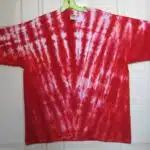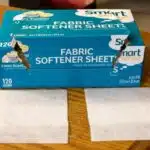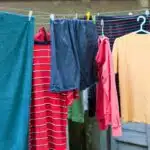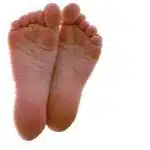As a laundry care professional, it is essential to understand how to reduce wrinkles in clothes. Wrinkles not only make clothes look unkempt and unprofessional but can also damage the fabric over time. Ironing can be a time-consuming task, and not everyone has access to a steamer or iron. However, there are various ways to reduce wrinkles without using an iron or steamer.
One of the easiest ways to reduce wrinkles is by using fabric softener in the wash cycle. Fabric softener helps relax the fibers in the fabric during the washing process, making it easier for them to straighten out once dry. Additionally, hanging clothes up immediately after washing them can help reduce wrinkles since gravity will pull down on the fabric and naturally straighten it out. In this article, we will explore several methods for reducing wrinkles in clothes that do not require an iron or steamer and are easy to incorporate into your laundry routine.
The Importance Of Reducing Wrinkles In Clothes
According to a recent survey, 70% of people rate the appearance of their clothes as extremely important. This indicates that people place a high value on looking presentable and well put-together. One of the key factors in achieving this is ensuring that clothes are wrinkle-free.
Wrinkled clothes can give off a sloppy and unkempt appearance, even if the rest of the outfit is stylish and well-coordinated. Additionally, wrinkles can make it difficult for clothes to fit properly, leading to discomfort and unflattering bulges. To avoid this, it’s crucial to take steps towards wrinkle prevention.
Thankfully, there are several tips that can help reduce wrinkles in clothes. Firstly, storing clothing items properly can make a big difference. Hanging up garments or folding them neatly can prevent creases from forming in the first place. Secondly, choosing fabrics that are less prone to wrinkling can be helpful too. Materials like cotton blends or synthetic fibers tend to wrinkle less than pure cotton or linen. By following these simple tips, you can ensure that your clothes remain smooth and polished-looking throughout the day.
Fabric softener: A Simple Solution While there are many ways to prevent wrinkles in clothing, one solution that stands out is fabric softener. Not only does it help reduce static cling and soften fabrics, but it also helps prevent wrinkles by relaxing fibers and reducing friction during washing and drying cycles. In addition to making clothes more comfortable to wear, fabric softener helps keep them looking their best for longer periods of time. Let’s explore some of the benefits of using fabric softener in greater detail below.
Fabric Softener: A Simple Solution
Having wrinkled clothes is never a good look, and it can make you look sloppy or unprofessional. In the previous section, we discussed the importance of reducing wrinkles in clothes and how it can benefit you. Wrinkle-free clothes not only look better but also last longer.
If you’re looking for fabric softener alternatives to reduce wrinkles in your clothes, there are many options available. One popular alternative is using dryer balls. These balls are typically made of wool or plastic and work by bouncing around in the dryer with your clothes. This helps to separate the fibers and prevent them from clumping together, which can cause wrinkles.
Alternatively, if you’re looking for DIY wrinkle reducing solutions, there are a few things you can try at home. One option is to mix equal parts water and white vinegar in a spray bottle and lightly spritz your clothes before ironing. Another option is to use a damp towel or cloth to press out any wrinkles while ironing. These methods may take a little more effort than using fabric softener or dryer balls, but they can be just as effective.
As mentioned earlier, dryer balls are an excellent tool for reducing wrinkles in your clothes; however, there are other methods available if you prefer not to use them. In the next section, we’ll discuss using dryer balls more in-depth and how they work to keep your clothes wrinkle-free.
Using Dryer Balls To Reduce Wrinkles
Imagine you are a chef preparing a delicious meal. You have all the right ingredients, but your dish just needs that extra something to make it perfect. Similarly, when it comes to reducing wrinkles in your clothes, dryer balls can be that added ingredient to make your laundry routine complete. However, not everyone has access to or wants to use dryer balls. For those who fall into this category, there are alternative methods for reducing wrinkles.
One option is to create DIY wrinkle reducing solutions. One such solution involves mixing equal parts water and fabric softener in a spray bottle and lightly misting clothes before placing them in the dryer. Another DIY option is using vinegar instead of fabric softener, which can also help reduce static cling. Simply add half a cup of white vinegar to the rinse cycle in place of fabric softener.
If DIY methods aren’t your thing and you’re still looking for alternatives to dryer balls, consider using wool dryer balls or even clean tennis balls as substitutes. Wool dryer balls work by absorbing moisture from the clothes and creating space between them in the dryer drum. Tennis balls work similarly by bouncing around inside the drum and helping to separate clothes.
By exploring these options, you can find what works best for you and your laundry routine. While dryer balls may be a popular choice for reducing wrinkles, there are plenty of alternative solutions available. In the next section, we’ll discuss another technique for keeping your clothes wrinkle-free: shake it out!
Shake It Out: The Benefits Of Fluffing Clothes
Shaking out clothes is a simple and effective technique for fluffing them up and reducing wrinkles. The benefits of shaking clothes go beyond just wrinkle reduction, as it also helps to remove any unwanted debris or lint that may have accumulated on the fabric. It is an easy step that can be done before ironing or hanging up clothes.
To shake out clothes properly, simply hold the garment by the shoulders and give it a few quick flicks until it falls into its natural shape. For heavier fabrics such as denim or wool, you may need to give it a more vigorous shake to get rid of any stubborn wrinkles. This technique is especially useful when traveling, as it allows you to freshen up your clothes without needing access to an iron.
Another benefit of shaking out clothes is that it helps to prolong their lifespan. By removing any dirt or debris that may have accumulated on the fabric, you reduce the risk of damage from rubbing or friction. Additionally, by fluffing up the fibers of the fabric, you allow for better air circulation during storage which prevents odors from developing.
Fluffing your clothes through shaking is an easy and efficient way to reduce wrinkles while preserving their quality. By incorporating this step into your laundry routine, you will save time and effort while ensuring that your garments look their best. Next up we’ll discuss another helpful technique for maintaining wrinkle-free clothes: the power of hanging them up immediately after washing.
The Power Of Hanging Clothes Up Immediately
Imagine this scenario: you are running late for a job interview, and your outfit is full of wrinkles. You don’t have time to iron it, so what do you do? Hanging your clothes up immediately after washing or drying them can be a lifesaver in these situations. Not only does it prevent wrinkles from forming in the first place, but it also makes it easier to remove any that may have already developed.
To get the most out of hanging your clothes up, there are some best practices to keep in mind. First, make sure you use proper hangers that support the weight of the garment without stretching or distorting it. Second, give each item plenty of space on the rod to allow air to circulate and prevent bunching or creasing. Finally, avoid overcrowding by rotating items in and out of your closet seasonally.
Another great way to keep your clothes looking fresh and wrinkle-free is by steaming them. There are many benefits to using a steamer over an iron, including gentler treatment of delicate fabrics and more efficient removal of stubborn wrinkles. Additionally, steamers often come with attachments that can help clean and sanitize other household surfaces like curtains or upholstery.
With these tips in mind, hanging your clothes up immediately after washing or drying them can help reduce wrinkles and preserve their quality for longer periods. In the next section, we will explore another popular wrinkle-reducing option: sprays. However, before turning to chemical solutions, it’s always best to explore natural methods first!
Wrinkle-Reducing Sprays: Do They Work?
- Wrinkle-reducing sprays come in a variety of forms, such as aerosol cans, pump bottles, and refillable bottles.
- These sprays are typically composed of a combination of water and fabric softener, with some including additional ingredients such as starch and silicone.
- The effectiveness of wrinkle-reducing sprays is highly dependent on the type of fabric being treated, and in some cases, may not be effective at all.
- It is important to carefully read the product directions before using any wrinkle-reducing spray, as improper use may result in reduced effectiveness or damage to clothing.
Types Of Wrinkle-Reducing Sprays
When it comes to reducing wrinkles in clothes, wrinkle-reducing sprays are a popular go-to solution. These sprays can help eliminate wrinkles and leave your clothes looking fresh and crisp. However, there are different types of wrinkle-reducing sprays available in the market, each with its own unique features.
One type of wrinkle-reducing spray is the travel-sized option. These sprays are perfect for those on-the-go who need to keep their clothes wrinkle-free while traveling. They come in small sizes that can easily fit into your luggage or purse, making them convenient to carry around. Additionally, some travel-sized options also have a refreshing scent that can give your clothes a quick pick-me-up.
For those who prefer DIY alternatives, homemade wrinkle-reducing sprays can be an effective option. You can make these sprays by blending together water and fabric softener or vinegar and water. These DIY solutions not only reduce wrinkles but also save you money and provide an eco-friendly alternative to store-bought options. Moreover, you can customize the scent of these sprays according to your preference.
In conclusion, when it comes to reducing wrinkles in clothes with a spray product, considering the available options is essential. Travel-sized options are perfect for those on-the-go while DIY alternatives provide a cost-effective and customizable solution. By choosing the right type of spray for your needs, you can effectively reduce wrinkles in your clothes and always look presentable no matter where you go.
Effectiveness Of Wrinkle-Reducing Sprays
Wrinkle-reducing sprays are popular among people who want to keep their clothes looking neat and fresh. However, the question remains: do they work effectively? To answer this, an effectiveness evaluation should be conducted to compare the various types of wrinkle-reducing sprays available in the market.
A comparison study can assess the performance of different brands and types of wrinkle-reducing sprays in terms of their ability to reduce wrinkles on different fabrics. The study can also evaluate other factors such as scent, ease of use, and cost-effectiveness. By conducting a comprehensive effectiveness evaluation, consumers can make informed decisions when choosing a wrinkle-reducing spray that suits their needs.
In conclusion, while wrinkle-reducing sprays are a convenient solution for reducing wrinkles in clothes, their effectiveness may vary depending on various factors such as fabric type and brand. An effectiveness evaluation can help consumers choose the right product for their needs based on objective data and comparisons.
Steam In The Shower: A Convenient Solution
Wrinkles in clothes can be a nuisance, especially when you’re traveling and don’t have access to an iron or steamer. While wrinkle-reducing sprays can be effective, they can also be expensive and have mixed results. Another alternative is using a hand-held steamer, which has both benefits and drawbacks.
One benefit of using a hand-held steamer for wrinkle reduction is that it’s convenient and easy to use. Simply fill the reservoir with water, plug it in, and wait for it to heat up. Then, run the steamer over the wrinkled areas of your clothes until they’re smooth. This method is also great for delicate fabrics that can’t withstand the heat of an iron.
However, there are some drawbacks to using a hand-held steamer as well. For one, they can be bulky and take up valuable space in your luggage. Additionally, they may not always effectively remove deep wrinkles or creases in certain fabrics. In these cases, alternative methods for reducing wrinkles may be necessary while traveling.
| Method | Benefits | Drawbacks |
|---|---|---|
| Hand-held Steamer | Convenient/easy to use; great for delicate fabrics | Bulky; may not always effectively remove deep wrinkles |
| Ironing | Effective on most fabrics; can create sharp creases | Requires an ironing board; not good for delicate fabrics |
| Packing Techniques | Minimizes wrinkles during travel | May require extra effort/time to pack properly |
Overall, while hand-held steamers can be useful for quick wrinkle reduction on-the-go, they may not always be the best option depending on your specific needs and limitations. Other methods such as ironing or packing techniques should also be considered when trying to reduce wrinkles in clothes while traveling.
When it comes to unconventional methods for reducing wrinkles in clothes, one trick that may surprise you is the ice cube method. Keep reading to learn more about this unique and surprising technique.
The Ice Cube Trick: An Unconventional Method
Are you tired of wrinkles ruining your carefully planned outfits? Fear not, as there is an unconventional solution to this problem – the ice cube trick. Yes, you read that right. Ice cubes can be used to reduce wrinkles in your clothes and leave them looking crisp and fresh.
Here are three simple steps to using the ice cube trick:
- Grab a few ice cubes from your freezer and place them in a clean towel.
- Rub the towel with the ice cubes over the wrinkled areas of your clothes.
- Hang or lay the clothes flat until they dry completely.
This creative solution may seem strange at first, but it’s actually quite effective. The ice cubes create steam which helps smooth out wrinkles and leave your clothes looking neat and tidy.
While there are plenty of alternative methods for wrinkle reduction, using ice cubes is definitely one of the more unique options available. So next time you’re struggling with stubborn wrinkles, give this method a try – you might be surprised at how well it works!
Transitioning into our next topic, another alternative method for wrinkle reduction involves using vinegar. But how does this work exactly? Let’s explore in the following section.
The Vinegar Solution: How It Works
The Ice Cube Trick may have worked wonders for your wrinkled clothes in the past, but there are other natural remedies that can produce similar results. One such solution is the Vinegar Solution, which entails mixing equal parts of water and white vinegar in a spray bottle. This solution works by breaking down the minerals and salts that cause the wrinkles to form, allowing your clothes to smooth out more easily.
If you’re not a fan of using vinegar on your clothes, there are other Vinegar Solution alternatives to consider. Lemon juice, for example, can be mixed with water and sprayed onto your clothes to remove wrinkles naturally. Another option is using essential oils like lavender or peppermint, which not only help reduce wrinkles but also leave your clothes smelling fresh and clean.
The benefits of natural remedies like the Vinegar Solution and its alternatives are numerous. Not only do they save you money compared to expensive commercial products, but they are also better for the environment and gentler on your skin. Plus, with these natural solutions at hand, you won’t have to worry about running out of wrinkle-reducing products when you need them most.
Ironing Alternatives: A Comparison
When it comes to reducing wrinkles in clothes, ironing is the traditional method that most people turn to. However, there are alternative methods that can achieve similar results without the use of an iron. One popular alternative is steaming. Ironing and steaming both work by applying heat and moisture to the fabric, but they differ in their approach.
Ironing involves using a hot iron pressed onto the fabric to smooth out any wrinkles. This method works well for heavy fabrics such as denim or cotton, but it can be time-consuming and requires some skill to avoid damaging delicate fabrics. Steaming, on the other hand, uses a machine that emits steam onto the fabric which relaxes the fibers and removes wrinkles. Steaming is faster than ironing and more gentle on delicate fabrics such as silk or wool.
In addition to these alternatives, there are also wrinkle-reducing fabrics available on the market. These fabrics are specially designed to resist wrinkling and creasing, making them easier to care for and maintain. Some examples of wrinkle-reducing fabrics include polyester blends, rayon blends, and certain types of cotton. Investing in these types of fabrics can save time and effort when it comes to caring for your clothes.
- Ironing vs steaming
- Benefits of wrinkle-reducing fabrics
- Pros and cons of each method
- Best practices for steaming clothes
- How to choose the right fabric based on your needs
Transition: While these alternatives can be effective in reducing wrinkles, there is another simple step you can take when caring for your clothes: air drying them. In the next section, we will explore the benefits of air drying clothes and how it can help extend their lifespan while also being eco-friendly.
The Benefits Of Air Drying Clothes
When it comes to caring for your clothes, air drying can provide significant benefits. Not only does it save on energy costs and reduce wear and tear on the fabric, but it can also help minimize wrinkles. In fact, many laundry care professionals recommend air drying as a gentle way to keep clothes looking their best.
One of the primary benefits of air drying clothes is that it allows them to retain their shape and texture. When you use a dryer, the high heat and tumbling action can cause fabrics to shrink or warp over time. By contrast, air drying allows garments to dry naturally without any harsh mechanical forces that could damage the fibers. This means that your clothes will maintain their original appearance longer.
To maximize the efficiency of air drying, there are a few tips you should keep in mind. First, make sure that you shake out each garment before hanging or laying it flat to dry. This will help prevent any wrinkles from setting in during the drying process. Additionally, consider investing in a clothes rack or line that provides ample space for garments to hang without touching each other. This will allow for maximum airflow around each item so that they dry completely and evenly.
Transition: While air drying is an excellent way to minimize wrinkles in your clothes, there are still some steps you can take during the folding process to further reduce creases and crumples. Read on for tips on proper folding techniques that will keep your garments looking fresh and smooth!
Tips For Proper Folding To Minimize Wrinkles
Proper folding is one of the most effective ways to reduce wrinkles in your clothes. However, not all folding techniques are created equal. To minimize wrinkles and make your clothes look neat and tidy, it’s important to follow some basic guidelines.
First, start by laying out your garment on a flat surface. Smooth out any wrinkles or creases with your hands before folding. Then, fold the garment in half vertically down the center front or back. Next, fold the sleeves or pant legs inward so that they form a straight line with the body of the garment. Finally, fold again horizontally into thirds or quarters for space saving folding.
Efficient suitcase packing requires a slightly different approach to folding. To maximize space and minimize wrinkles when packing for travel, try rolling your clothes instead of folding them. This technique helps to create more room in your suitcase while also preventing creases and wrinkles from forming. Alternatively, you can use packing cubes or compression bags to keep your clothes organized and wrinkle-free.
Overall, proper folding is an essential part of laundry care that can help extend the life of your clothing while keeping it looking its best. By following these tips for space saving folding and efficient suitcase packing, you can minimize wrinkles and keep your wardrobe looking great no matter where life takes you.
As we’ve seen, proper folding can go a long way toward reducing wrinkles in your clothes. However, there are other factors to consider as well when it comes to maintaining the quality of your garments over time. In the next section, we’ll take a closer look at how overcrowding in the wash cycle can lead to damage and premature wear on your clothing items.
Avoiding Overcrowding In The Wash Cycle
Proper washing of clothes is crucial to maintaining their quality and reducing wrinkles. Wash cycle management plays a significant role in ensuring that clothes are clean and wrinkle-free. It is essential to select the correct settings for your washing machine, including water temperature, spin speed, and cycle length.
Load balancing is equally important when it comes to preventing wrinkles. Overcrowded laundry machines can cause wrinkling as clothes rub against each other during the wash cycle. It is best to divide loads into smaller ones that allow enough room for clothes to move freely in the machine. This will help prevent friction and reduce the likelihood of wrinkles.
In addition to proper load balancing, choosing the right fabric can also minimize wrinkles. Synthetic fabrics such as polyester and nylon are generally less prone to wrinkling than natural fibers like cotton or linen. However, if you prefer natural fibers, consider purchasing wrinkle-resistant blends or those made from high-quality long-staple cotton. These fabrics are designed with special finishes that help keep them smooth and wrinkle-free even after multiple washes.
Transitioning into the next section, it is important to note that while selecting the appropriate fabric can aid in reducing wrinkles, there are additional steps you can take during the laundering process that contribute significantly to this outcome. By following proper washing techniques along with choosing the right fabric for wrinkle resistance, you can ensure that your clothes not only look great but have increased longevity as well.
Choosing The Right Fabric For Wrinkle Resistance
- A variety of fabrics exist that may be used to reduce wrinkles, such as cotton and polyester blends, and wool, linen, and silk.
- The weave of the fabric is an important factor to consider when choosing a fabric for wrinkle resistance, as tighter weaves create more wrinkle-resistance.
- Fabrics with a higher thread count may also be more wrinkle-resistant than fabrics with a lower thread count.
- In addition, the finish of the fabric, such as a permanent press finish, can help reduce wrinkles and maintain the fabric’s shape.
Types Of Fabrics
Wrinkles on clothes can ruin a person’s overall look, and removing them can be a tedious task. The good news is that there are fabrics that are wrinkle resistant, making it easier to maintain a polished appearance. When choosing the right fabric for wrinkle resistance, it is important to consider the type of fabric.
Cotton is a popular choice for clothing due to its breathability and comfort. However, cotton fabrics tend to wrinkle easily and require ironing or steaming. Polyester blends, on the other hand, are known for their wrinkle resistance and durability. These fabrics are commonly used in uniforms and workwear as they hold up well even after multiple washings. Nylon is also an option for those looking for wrinkle-resistant fabrics. This synthetic fabric is lightweight and dries quickly but can be prone to static cling.
To maintain the quality of wrinkle-resistant fabrics, it is essential to follow proper fabric care techniques. Avoid using high heat when washing or drying these types of fabrics as it can damage their fibers. Use gentle cycle settings when washing and tumble dry on low or hang-dry if possible. It’s also important to avoid overloading the washing machine as this can cause wrinkles due to clothes not having enough space to move around freely.
Overall, choosing the right fabric plays a crucial role in reducing wrinkles in clothes. By selecting wrinkle-resistant fabrics such as polyester blends or nylon, you can keep your clothes looking crisp without spending too much time ironing or steaming them. Remember to follow proper fabric care techniques when washing and drying these types of materials to ensure their longevity and effectiveness in resisting wrinkles.
Fabric Weaves
When it comes to choosing the right fabric for wrinkle resistance, there are many factors to consider. One of these factors is the type of fabric weave used. Fabric weaves determine how tightly or loosely woven the fibers are, which affects the fabric’s durability, breathability, and wrinkle prevention.
Tightly woven fabrics such as twill and poplin are known for their wrinkle-resistant properties. These fabrics have a smooth surface that makes it difficult for wrinkles to form. Additionally, the tight weave allows them to hold their shape well, reducing the need for ironing or steaming. On the other hand, loosely woven fabrics such as linen or muslin tend to wrinkle easily because they have more space between the fibers, allowing them to move around and crease more easily.
Another factor to consider when choosing a fabric weave is its weight. Heavier fabrics like denim or canvas tend to hold their shape better and resist wrinkles more effectively than lightweight fabrics like chiffon or silk. However, heavier fabrics may not be suitable for all occasions due to their weight and lack of breathability.
In conclusion, choosing the right fabric weave plays a significant role in preventing wrinkles in clothing. Tightly woven fabrics like twill and poplin offer excellent wrinkle resistance due to their smooth surfaces and tight weave. In contrast, loosely woven fabrics like linen or muslin are more prone to wrinkling due to their open structures. The weight of the fabric should also be considered as heavier materials tend to hold their shape better but may not be suitable for all occasions. By considering these factors when choosing a fabric weave, you can keep your clothes looking crisp and polished without spending too much time ironing or steaming them.
Wrinkle-Reducing Accessories: Do They Really Help?
The iron and the dryer are not the only options to get rid of wrinkles. There are also accessories designed to reduce wrinkles in clothes. These wrinkle-removing devices come in different forms, such as steamers, fabric shavers, and wrinkle sprays. While they may seem like a convenient solution, it is important to weigh their pros and cons.
Steamers are becoming increasingly popular as they offer a safer alternative to ironing for delicate fabrics. They are easy to use and can quickly remove creases from clothing. However, they can be expensive, bulky, and take up valuable storage space. Fabric shavers, on the other hand, are cheap and portable but may damage certain types of fabric or leave behind fuzz balls. Wrinkle sprays provide another option that is relatively affordable and does not require any special equipment; however, some people find that they do not work as well on stubborn wrinkles.
Comparing DIY vs. store bought wrinkle reducers is also worth considering. Homemade solutions such as vinegar or hair conditioner diluted with water have been suggested over the years as effective wrinkle reducers. While these methods may work for some people, there is no guarantee that they will work for everyone or that they will not cause damage to the clothing item in question. Store-bought products offer consistency in terms of effectiveness and safety but can be pricey.
Overall, it is up to personal preference whether one chooses to invest in wrinkle-removing devices or stick with traditional ironing or drying methods. It is important to consider factors such as cost, convenience, effectiveness, and potential harm before making a decision.
Conclusion
Reducing wrinkles in clothes is important for both the appearance and longevity of your garments. As a laundry care professional, I have seen firsthand the negative effects that wrinkles can have on fabrics. Thankfully, there are simple solutions to help reduce wrinkles and keep your clothes looking their best.
One effective method is using fabric softener in the wash cycle or dryer sheets in the dryer. Dryer balls can also help reduce wrinkles by separating and fluffing up clothes as they tumble. Additionally, shaking out freshly laundered clothes before drying or hanging them up immediately after removing them from the dryer can prevent wrinkles from setting in.
Proper folding techniques can also minimize wrinkles, as well as avoiding overcrowding in the wash cycle and choosing fabrics with wrinkle-resistant properties. While some wrinkle-reducing accessories may claim to be beneficial, it is important to do thorough research before investing in any products.
Remember, reducing wrinkles goes beyond just aesthetics – it helps preserve the quality of your clothes and saves you time and money on ironing or dry cleaning expenses. By implementing these tips into your laundry routine, you can achieve wrinkle-free clothing without sacrificing time or effort.
Image Credits
- “An introduction to wrinkles” by Neil. Moralee (featured)



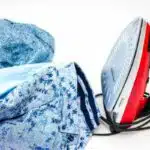















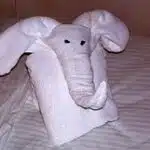

![How To Wash And Care For White Clothes 21 The only genuine borax soap cleanses hygienically saves the clothes and hands. 20 Mule-Team brand Boraxo white laundry soap [front]](https://green-life.blog/wp-content/uploads/2023/05/YDXLLCovnOjq-150x150.jpg.webp)
